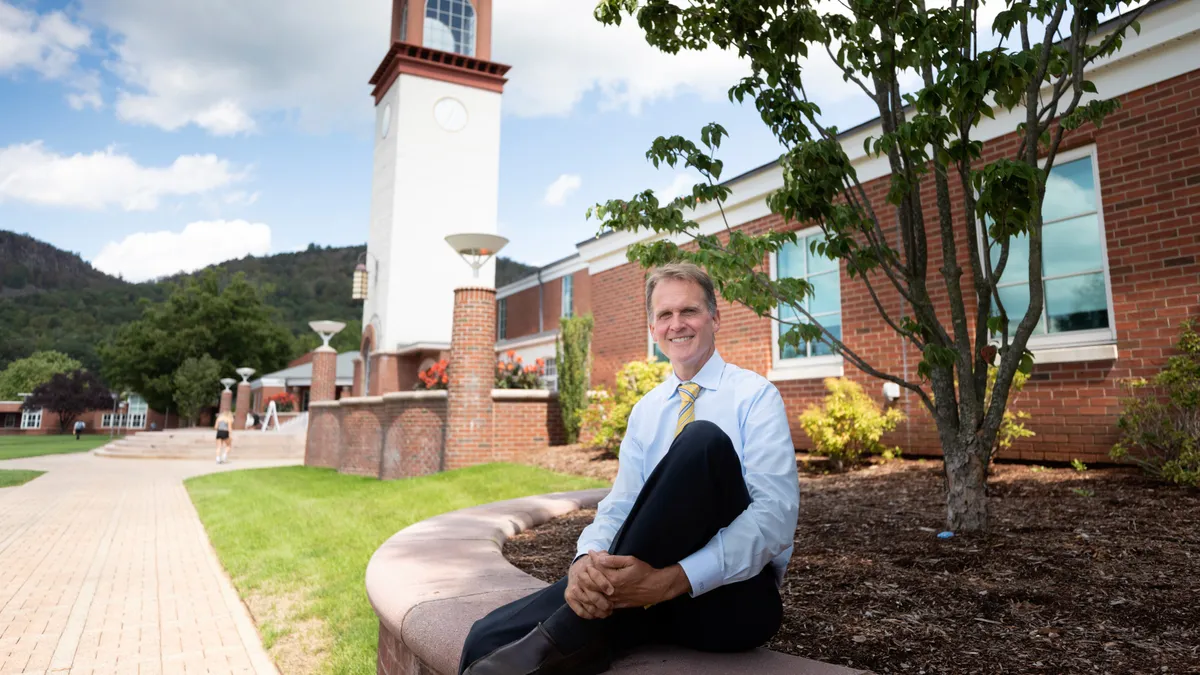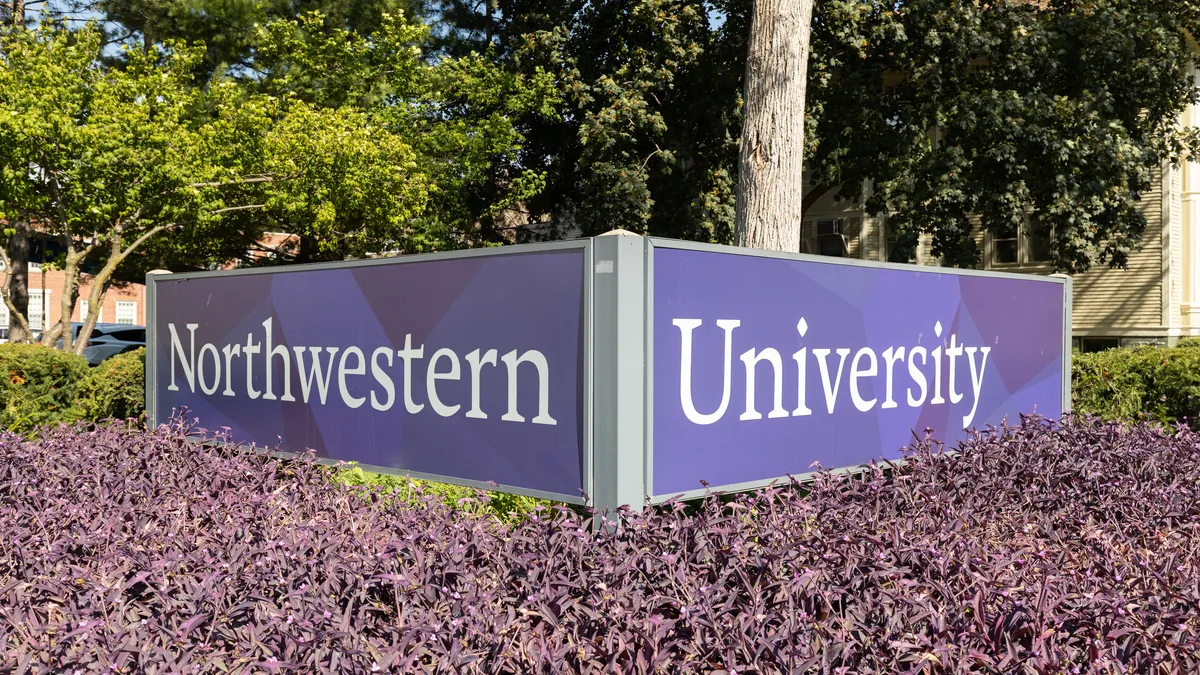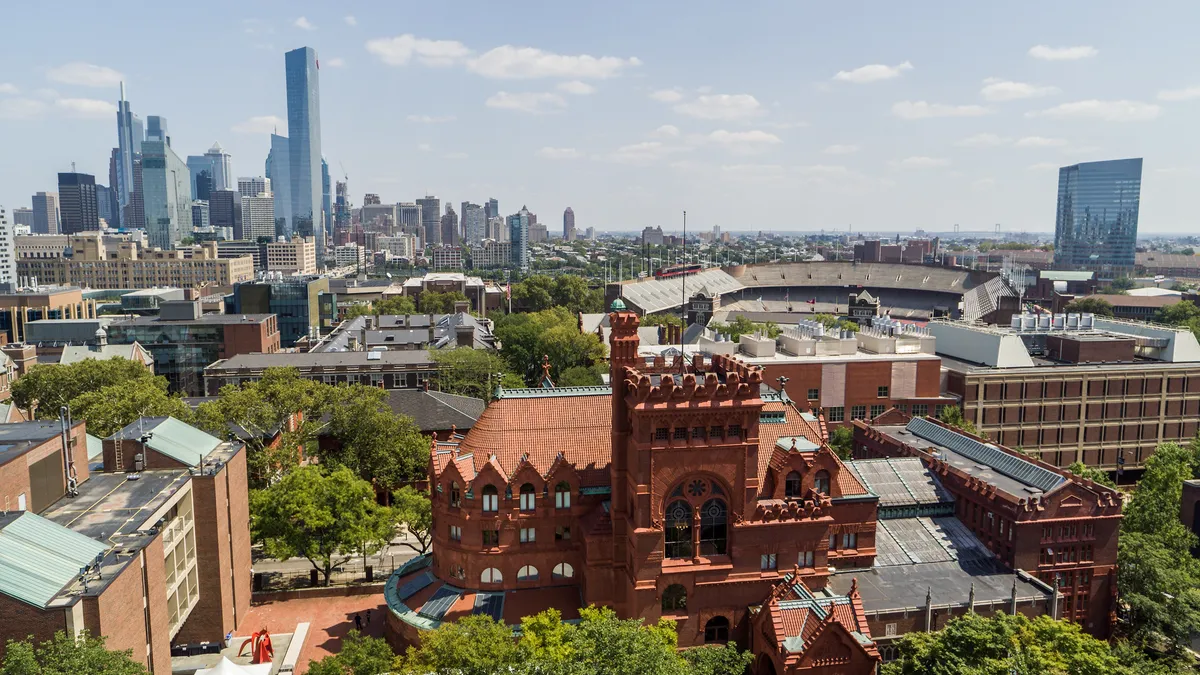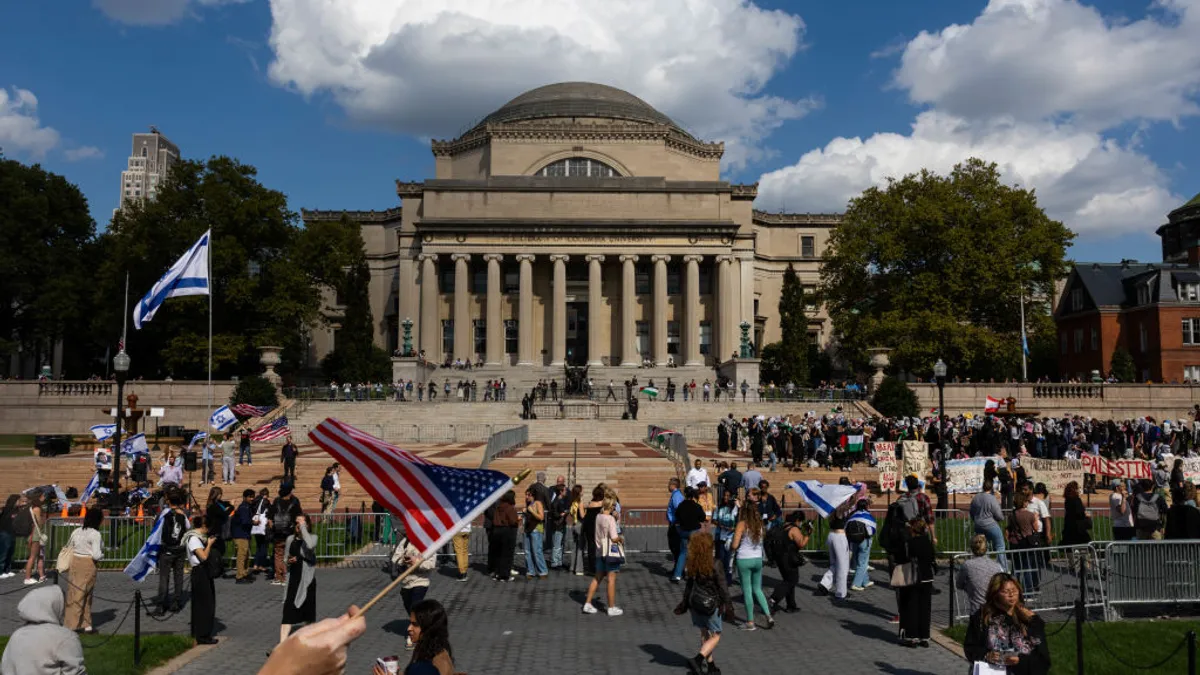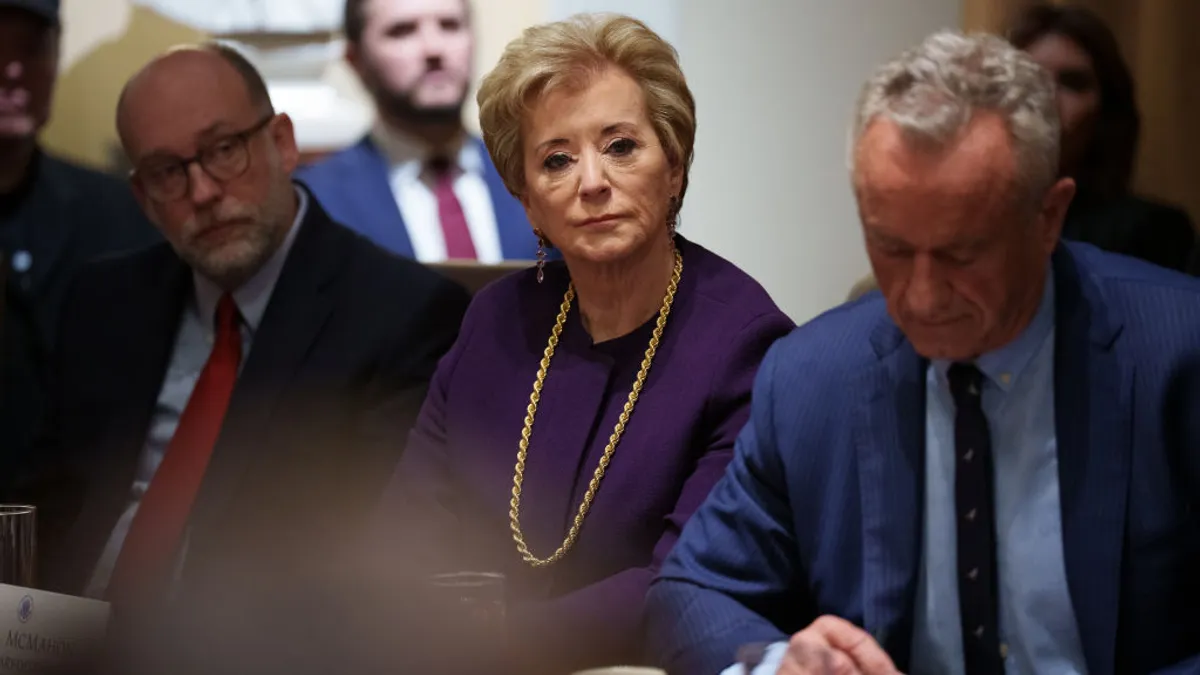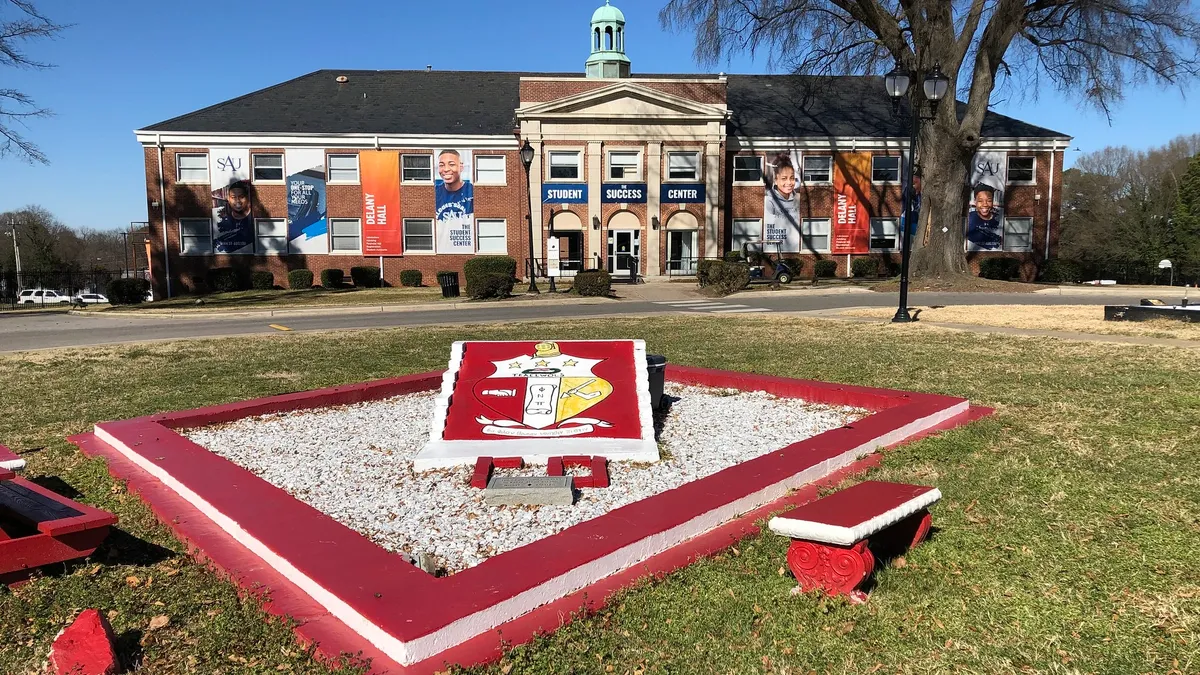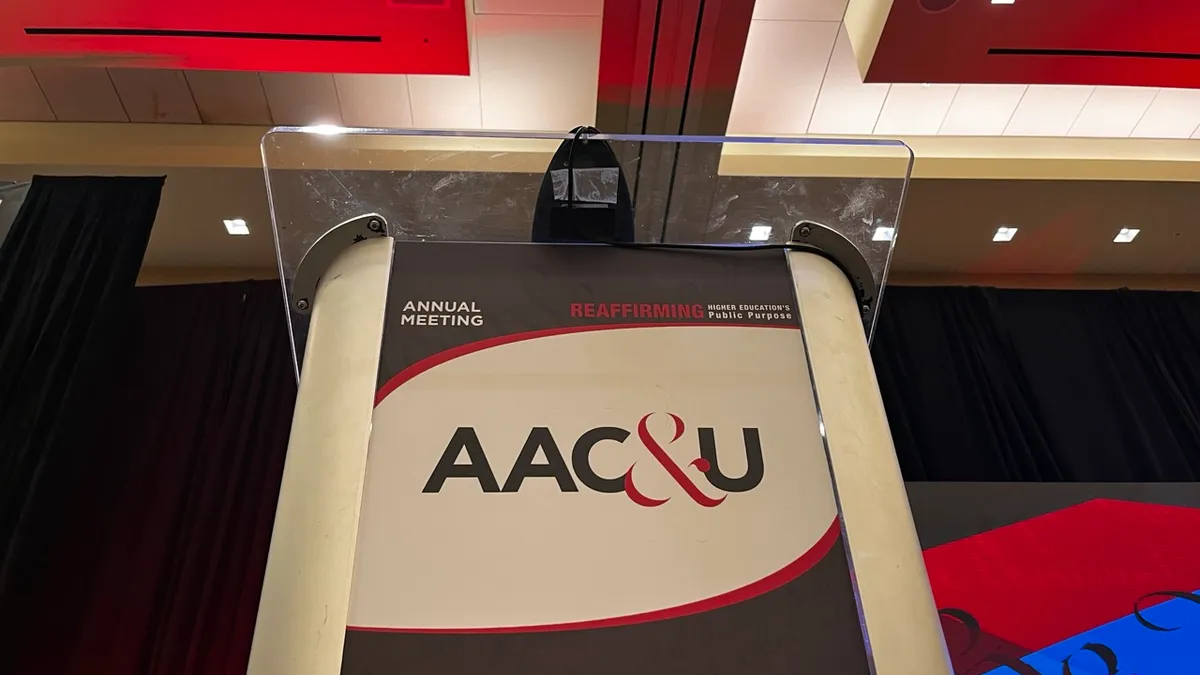An increasingly popular job in corporate America is finding its way into higher education: chief experience officers. One of its pioneers in the sector is Tom Ellett, who stepped into the newly created role at Quinnipiac University, a private four-year institution in Connecticut, last August.
The position is much like it sounds. "The university really wanted to understand what students were experiencing outside the classroom," Ellett said. He works alongside the provost, who handles the academic realm.
Outreach has been a big part of the job so far for Ellett, who previously worked in student affairs at New York University and, before that, Syracuse University. Although his first year at Quinnipiac was marked by the pandemic, he's made inroads with students and staff.
This year, he's going a step further by moving into a residence hall apartment. He hopes the new digs will give him more insight into student life at the school and allow him to mentor students.
He'll have a crucial hook: a 10-year-old Labrador–border collie named Roman.
Meanwhile, Ellett is using cross-campus committees to tackle some of his priorities: assessment of the student experience; gaining recognition for his team within the institution; and diversity, equity and inclusion. Advisory panels with current students and high school counselors let him get the pulse of key stakeholder groups. He's also looking for ways to bring in parents who raise issues with the institution to help find solutions.
"One of the things I've really tried to do in my short time here is to bring about all of the people to see that the student life, the student experience, is everyone's role all of the time," Ellett said.
We talked with Ellett about his first year in the job, what he hopes to get out of living in the dorms, and what colleges should consider when adding a CXO.
Editor's note: This interview has been edited for brevity and clarity.
HIGHER ED DIVE: Who within the institution reports directly to you?
ELLETT: Enrollment management, which includes admissions, enrollment technology, financial aid and marketing, and then the registrar, bursar, student affairs — which encompasses all of fraternity and sorority, orientation, residence life and housing, religious life, service, rec sports, health and wellness — and then dining and public safety. We meet biweekly and talk about what is the vision of the institution, what are the strategic goals of the institution, and how does our staff collectively play a role in that?
Tell us more about the committees you formed.
They are comprised of entry-level staff all the way to director-level. Every office is represented. The student experience committee is looking at everything from return on investment in terms of marketing, to doing a path analysis of how students enter the institution and what are the steps they have to take and where are the critical points in which we lose them.
Data is really where so much of my attention needs to focus longer term. Once we have the data, we can start to understand what things are alienating or frustrating students and parents, and what are actually helpful to them.
What's an example of that?
When I got here, and it could have been somewhat because of the pandemic, there were a lot of concerns about some of the transactional issues regarding becoming and staying a student — paying your bills, getting your financial aid package, all of those things. After some quick analysis and working with staff, we are creating a "one-stop," where students and parents can go to one place and have any of their administrative questions answered.
Ours is comprised of financial aid (high-level questions), and then the bursar (paying your bill), registering for classes (the registrar/student enrollment), and then dining (you want to change your meal plan), housing (related to room changes), and parking and parking appeals. That one office will address all of those issues.
July 1 is when the new operation begins.
To what extent are you working behind the scenes in the administrative pathways and gathering the data you mentioned, versus being out on campus?
There's probably a mix. My wife and I are moving into the residence halls at the end of August. Thirty-two of my 36 professional years have been living in residence halls. [An institution] will say, 'We're doing X, Y and Z.' But I want to hear from students: Did they experience X, Y and Z?
When I was at NYU, I played the board game Risk monthly with students. We had brunch in our apartment with students. Those are the kind of things I want to bring here. I don't have any [formal] responsibilities in the residence hall. It's to be an intellectual and social presence for students. This is just another touchpoint for students who might be lonely.
[At Quinnipiac], I put on my mask and walk around campus, handing out popsicles and candies and fruits and so forth -- I tried to engage students and put my face out there. It was really about the personalization of a campus, which I couldn't personalize at NYU, which has 50,000 students. Here, I can be seen, I can move around. I have office hours every three weeks, 10-minute engagements with students. This upcoming year, I'll be much more present at community events, which were much less attended last year because of COVID restrictions.
[Editor's note: Quinnipiac enrolls around 7,000 undergraduates.]
How do you feed your experience back into the CXO position?
I'm trying to take what I'm learning from CXOs from other industries to start to see what's missing in the higher ed world as it relates to the user experience.
I've had the chance to talk to Disney people and others that helped me really start to think about this as a journey, from when [students are] in high school — what are we telling them, what are we doing to them, how are we capturing data? How are we transitioning for those who come [to the institution]? And then those who don't come, why? What was it that we didn't do that made you interested to apply but not come?
I'm looking at all of the touchpoints. How do we gather information of students who use the rec center, students who join a club, those who ascend to leadership within a club? What made them do that, and what made others not? And then how do I target? Once we start to see who those students might be, how do we market and how do we communicate, and how do we care for those students a little bit differently?
I'm talking to people who are doing the same thing for the entertainment field, hospitality field, healthcare field. There's something to be said that's similar: People have an experience, and being able to say, what was that experience?
The hard part about this at times is that learning can be painful. You go to Disney; you're not learning a lot. You buy something with Amazon; it's transactional. [On a college campus], there's the life — "I live here, I eat here, I sleep here" — and then there's the "I learn here through how I involve myself co-curricularly." You have to craft your assessment so you are understanding the learning pieces and the outcomes for that, and then the experience of transactions and community development. You take those three things and create the overall experience.
That is something I'm not sure higher ed has grappled with completely. How do you take those three disparate things and create one message of the experience for students? The [provost and I] are really trying to understand this whole experience and taking it from both of our perspectives.
What market segments are you looking at within the student body?
Class status — grad and undergrad. And commuters and resident students. We found here that commuters attrit at a higher level than resident students. So we're creating a similar position to RAs who will be helping them that first semester acclimate to the institution.
Eventually, because of the size of the institution, I'd love to be able to segment out the undeclared students from those who are enrolled in the various undergraduate schools.
What should colleges consider when adding a CXO?
Invest a percentage of time for that CXO to be living the experience with students, living in a residence hall, eating in the dining hall, having advisory boards, all of those things — and not just working with the student government.
Think of a bell curve. There's a certain percentage of students who get really involved, and there's a certain percentage who don't get involved at all, and then there's that middle. How big is the middle? At every institution it's different. I'd say the middle at NYU is probably 70%. I need to spend time with [that] 70% because the other ones are being heard.



